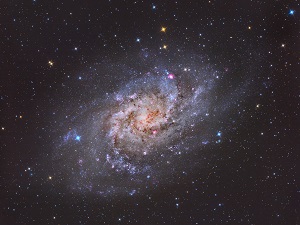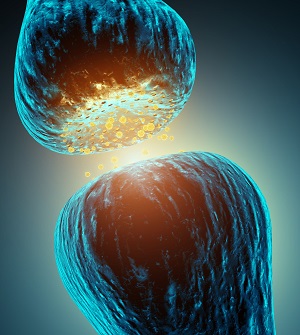19 Mar At the Edge of Possibility
 Does the universe of probability have boundaries? Are there physical laws that control all phenomena, or is there a mystical, capricious random power out there that is not subject to the laws of physics? Is anything impossible?
Does the universe of probability have boundaries? Are there physical laws that control all phenomena, or is there a mystical, capricious random power out there that is not subject to the laws of physics? Is anything impossible?
Physical laws are responsible for thresholds. Let us presume, for a moment, that probability is subject to one overriding physical law to which all other laws (presiding over their specific domains) are subject: the Principle of Possibility. In this law, probability ends at the threshold of possibility. This means probability (of which random probability is a part) is not asymptotic, even though it may appear to be so as far as the eye can see.
| Understanding Context Cross-Reference |
|---|
| Click on these Links to other posts and glossary/bibliography references |
|
|
|
| Prior Post | Next Post |
| Monkeys with Typewriters at the Threshold | Thresholds in Fuzzy Logic |
| Definitions | References |
| possibility threshold | Duda 1973 |
| random probability | Olofsson 2005 |
| asymptote modeling | Valiant 1994 |
Regarding the Random Hamlet Hypothesis. Again, it is founded on the assumption that random probability is asymptotic – a mathematical curve that approaches ever closer but never reaching zero. The ball in the box hypothesis is another illustration of random probability. The mathematics can be translated into a verbal proposition: No matter how improbable, anything is possible. We can modify the theory to replace the monkeys and keyboards with an infinitely powerful computer without violating the spirit of the hypothesis. This computer could use advanced random generators to randomly choose and append the finite set of English language characters forever.
 What could possibly stop the great computer from accidentally generating the body literature of mankind with footnotes? Perhaps there are constraints that govern or provide thresholds of possibility in random character generation! We know that certain characters occur more frequently in general and that the relative frequency of characters varies for different types of literature. If we were to program these frequencies into the random-character generator, it would no longer be random, but it still may not be able to generate two complete acts of Hamlet, even over the span of infinity. The probability of an incorrect character randomly entering into the stream may be so high as to disable the infinite, pure random generator from ever waxing truly poetic.
What could possibly stop the great computer from accidentally generating the body literature of mankind with footnotes? Perhaps there are constraints that govern or provide thresholds of possibility in random character generation! We know that certain characters occur more frequently in general and that the relative frequency of characters varies for different types of literature. If we were to program these frequencies into the random-character generator, it would no longer be random, but it still may not be able to generate two complete acts of Hamlet, even over the span of infinity. The probability of an incorrect character randomly entering into the stream may be so high as to disable the infinite, pure random generator from ever waxing truly poetic.
If we accept the threshold principle of possibility, then probabilistic modeling on computers can be constrained to the point where they will be more manageable than unconstrained processes. The computational cost of generating truly random, rather than quasi-random characters is high. The cost of watching random generators for something useful is even higher. But we have learned that AIs can apply a little random flavoring to known things to generate unique outputs as images and text. Moral issues aside, this is an amazing advancement in computational modeling.
Threshold logic has been shown empirically to apply to most if not all phenomena that we understand. Threshold logic as applied to probability theory is only a guess. But, prior to the actual experiment, the notion that probability is unconstrained is clearly less probable than the idea that there is a threshold beyond which the improbable becomes impossible. At the very least, even if random runs free in the universe, thresholds can help us keep computers in bounds, even with the introduction of quasi-random factors.
When Chaos Comes to Roost At the Edge of Possibility
 As we discussed in the introduction, there are two fuzzy factors in the way the brain processes information:
As we discussed in the introduction, there are two fuzzy factors in the way the brain processes information:
- the large number of neurons in the brain continually communicating with one another by spreading electronic impulses; and
- the variable intensity of each impulse at each synapse.
Most of the activity in the brain occurs at an unconscious level without bubbling up to our consciousness. This is because the voltages are so small and the network so large that there is no way the conscious mind can track the flow of impulses. This flow appears chaotic when examined with the most sensitive instruments we have, but we know that it yields results because we are able to recognize, generalize, infer, and make decisions.
The phenomenon that resolves this chaos into choate thoughts is the hot spot. A cluster of neurons becomes all fired up and triggers responses in our brain that constitute recognition, association, generalization, and resolve. The electrically excited cluster of neurons is the hot spot. When a spot gets hot enough, the brain activity becomes noticeable by our consciousness. At that moment, there is a transition from underlying, seemingly chaotic, unconscious brain activity to meaningful, recognizable, conscious cognitive events.
Just as neurons have a threshold of electrical activity which forces a transition from a resting state to a fired state, so the hot spots that heat up during the course of brain activity have a threshold beyond which brain activity transitions from the unconscious to the conscious. How does this understanding of thresholds in neural activity and the theory of possibility affect our cybernetic modeling? At a minimum, it tells us that it’s OK to have computed confidence values and results that we throw out because they don’t make the grade. We may find even more impacts on the models.
| Click below to look in each Understanding Context section |
|---|
| Intro | Context | 1 | Brains | 2 | Neurons | 3 | Neural Networks |
| 4 | Perception and Cognition | 5 | Fuzzy Logic | 6 | Language and Dialog | 7 | Cybernetic Models |
| 8 | Apps and Processes | 9 | The End of Code | 10 | Glossary | 11 | Bibliography |








